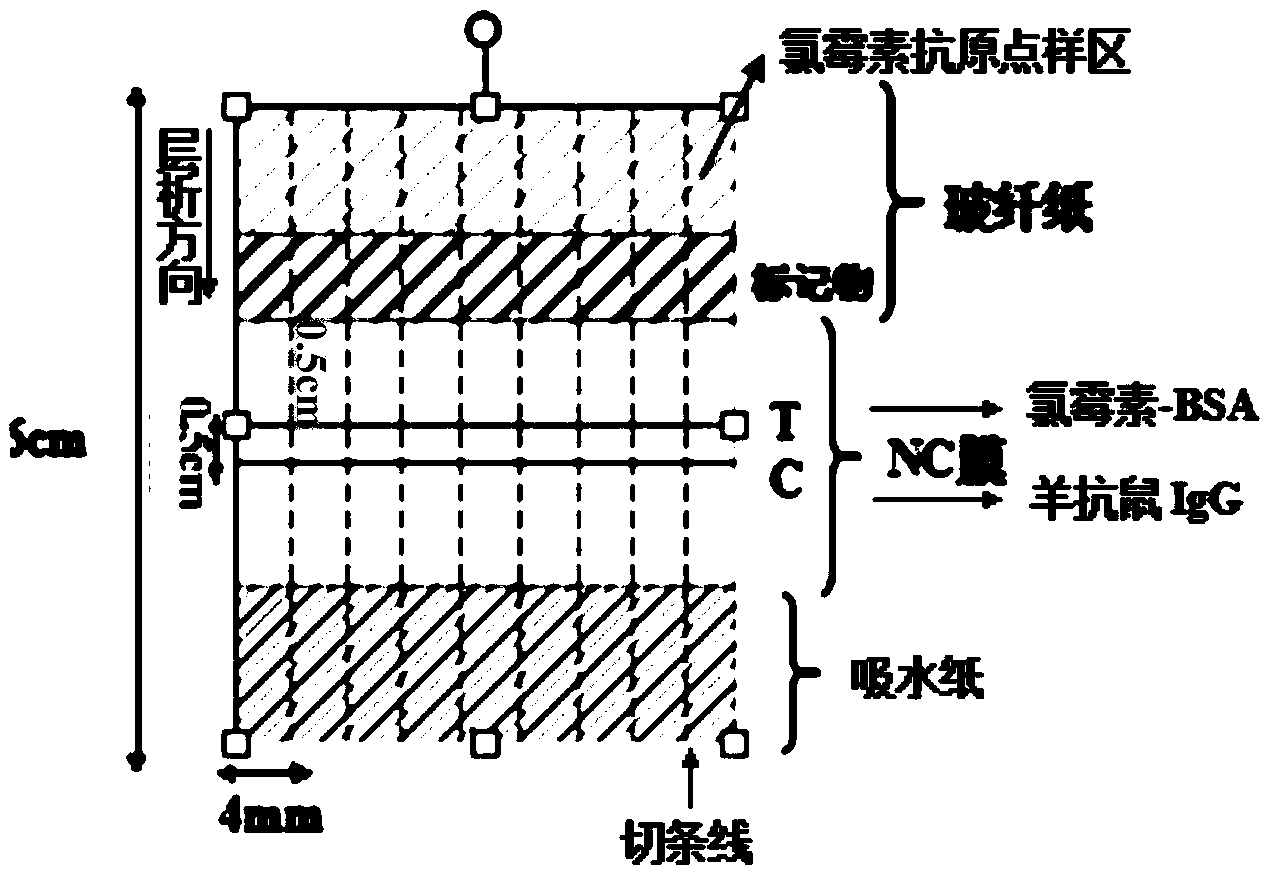Chloramphenicol quantitative detection method based on up-conversion phosphor technology and immunochromatography technology
A technology of immunochromatography and chloramphenicol, which is applied in the fields of nano-biomarkers, optical detection, and immunology, can solve the problems of inability to apply sample on-site detection or accurate quantification, inability to use on-site detection, unreliable results, etc., to avoid this problem Low interference, saving steps, and reducing false positive effects
- Summary
- Abstract
- Description
- Claims
- Application Information
AI Technical Summary
Problems solved by technology
Method used
Image
Examples
Embodiment 1
[0033] Upconversion nanomaterial used: NaYF 4 :Yb 3+ ,Er 3+
[0034] (1) Add the surfactant polyoxyethylene nonylphenyl ether (IGEPALCO520) into 145ml cyclohexane, ultrasonically disperse it into a transparent homogeneous solution with a concentration of 0.05g / ml, weigh up-conversion nanoparticles and add them to the cyclohexane Hexane, with constant ultrasonic stirring to form a transparent solution with a concentration of upconverting nanoparticles of 0.013%. Measure 0.58ml of an aqueous solution of 28% ammonia gas and add it to the above reaction system. When a little milky white colloid appears in the solution, ultrasonically and continuously stir to form a transparent homogeneous solution again, and finally add 0.145ml of tetraethyl orthosilicate. The reactor was placed on a magnetic stirrer and stirred at room temperature and pressure for 16 h. When the solution turned from transparent to light white, add a little methanol to precipitate the particles until saturated...
Embodiment 2
[0043] Others are the same as Example 1, and (4) and (7) are prepared as follows:
[0044] (4) Prepare a chromatographic solution containing 0.1% Tween-20 in volume fraction, 0.1% BSA and 1% sucrose in mass concentration, use 0.03mol / l phosphate buffer as the solvent, adjust the pH to 7.2, and take out the upconversion The suspension of the marker was centrifuged to remove the supernatant, and the precipitate was resuspended with the above chromatography solution for later use;
[0045] (7) Dilute 1mg / ml chloramphenicol by 100-100000 times with the above-mentioned chromatographic solution into standard solutions of different concentration gradients, use the chromatographic solution that does not contain chloramphenicol as a negative control, get each concentration standard solution and Control solution 0.1ml is added to 20ul mass concentration and is the suspension of the up-conversion marker of 1mg / ml and mixes evenly, the sample pad of the test paper prepared in embodiment 1 (...
PUM
| Property | Measurement | Unit |
|---|---|---|
| Particle size | aaaaa | aaaaa |
Abstract
Description
Claims
Application Information
 Login to View More
Login to View More - R&D
- Intellectual Property
- Life Sciences
- Materials
- Tech Scout
- Unparalleled Data Quality
- Higher Quality Content
- 60% Fewer Hallucinations
Browse by: Latest US Patents, China's latest patents, Technical Efficacy Thesaurus, Application Domain, Technology Topic, Popular Technical Reports.
© 2025 PatSnap. All rights reserved.Legal|Privacy policy|Modern Slavery Act Transparency Statement|Sitemap|About US| Contact US: help@patsnap.com



